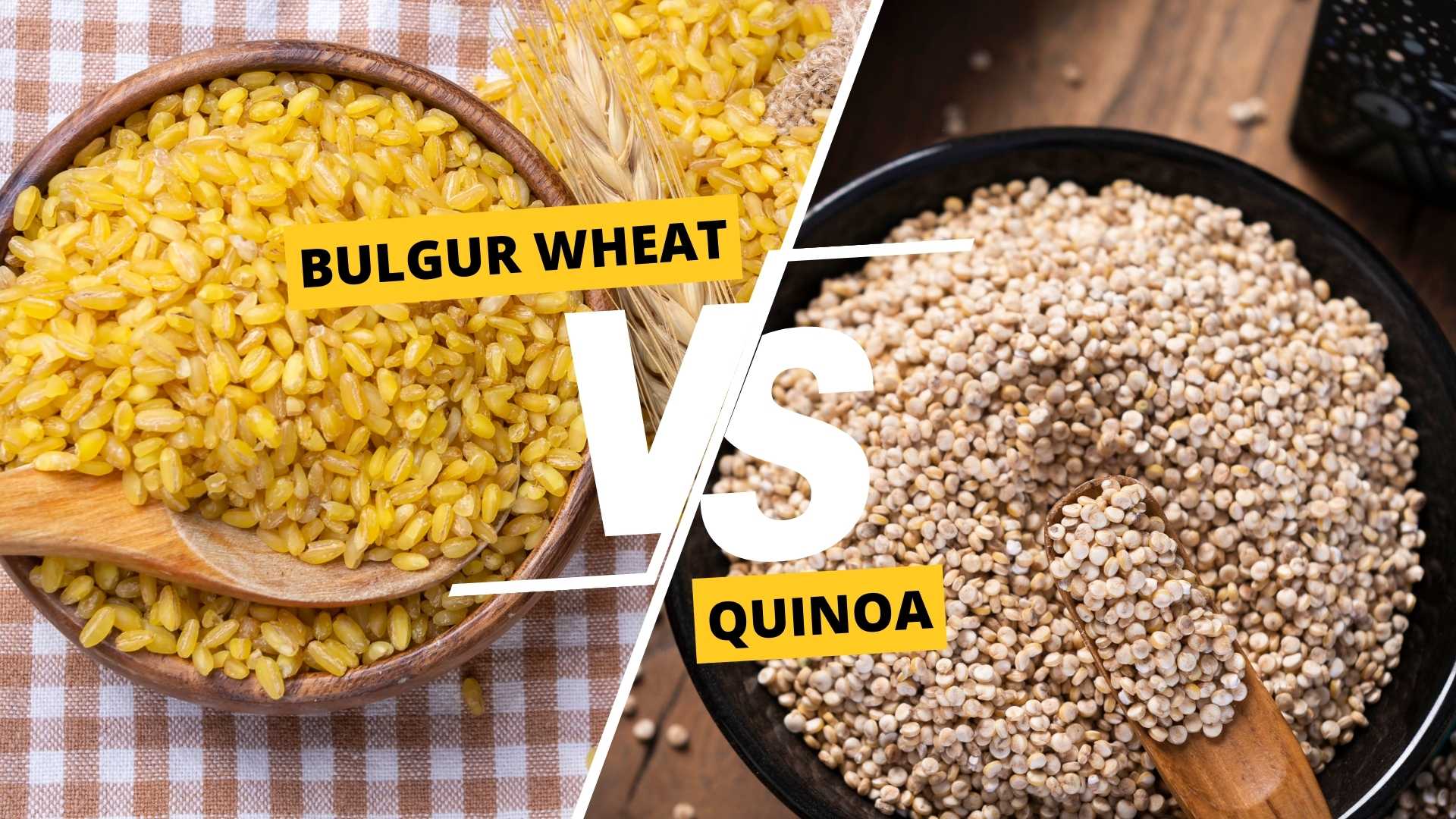Bulgur wheat and quinoa are both popular whole grains that are often used in a variety of dishes, including salads, soups, and stews. Bulgur wheat is a staple in Middle Eastern and Mediterranean cuisine, while quinoa is a popular grain from South America.
While they may look similar, they have different nutritional profiles and health benefits. This article will compare the nutritional benefits of bulgur wheat and quinoa to help you decide which grain is the best fit for your diet.
Nutritional Profile of Bulgur Wheat
Bulgur wheat is made by boiling and drying cracked wheat berries, which gives it a nutty flavor and a chewy texture. It is a good source of complex carbohydrates, fiber, protein, vitamins, and minerals. One cup of cooked bulgur wheat (182 g) contains:
- Calories: 151
- Carbohydrates: 34 g
- Fiber: 8 g
- Protein: 6 g
- Fat: 0.5 g
- Iron: 2.2 mg
- Magnesium: 79 mg
- Phosphorus: 173 mg
- Potassium: 148 mg
- Zinc: 1.3 mg
- Vitamin B6: 0.2 mg
Compared to the recommended daily values for adults, one cup of cooked bulgur wheat provides 17% of the daily recommended value of fiber, 12% of protein, 10% of iron, 20% of magnesium, 14% of phosphorus, 5% of potassium, 12% of zinc, and 10% of vitamin B6.
Bulgur wheat has a low glycemic index, which means it releases sugar slowly into the bloodstream, making it a good choice for people with diabetes. It also contains antioxidants, which protect the body against free radicals and oxidative stress.
Nutritional Profile of Quinoa
Quinoa is a grain-like seed that comes from South America. It has a mild, nutty flavor and a slightly crunchy texture. Quinoa is a complete protein, which means it contains all nine essential amino acids that the body needs to function. One cup of cooked quinoa (185 g) contains:
- Calories: 222
- Carbohydrates: 39 g
- Fiber: 5 g
- Protein: 8 g
- Fat: 4 g
- Iron: 2.8 mg
- Magnesium: 118 mg
- Phosphorus: 281 mg
- Potassium: 318 mg
- Zinc: 2 mg
- Vitamin B6: 0.2 mg
Compared to the recommended daily values for adults, one cup of cooked quinoa provides 10% of the daily recommended value of fiber, 16% of protein, 14% of iron, 30% of magnesium, 27% of phosphorus, 9% of potassium, 14% of zinc, and 11% of vitamin B6.
Quinoa is also a good source of antioxidants, which protect the body against free radicals and oxidative stress. It has a low glycemic index, which means it releases sugar slowly into the bloodstream, making it a good choice for people with diabetes.
Comparison of Bulgur Wheat vs Quinoa.
Protein Content
Protein is an essential nutrient that the body needs for growth, repair, and maintenance. Both bulgur wheat and quinoa are good sources of protein, but quinoa is considered a complete protein because it contains all nine essential amino acids that the body needs to function. Bulgur wheat, on the other hand, is an incomplete protein, as it lacks one or more of the essential amino acids.
While both grains contain protein, quinoa has a higher protein content than bulgur wheat. One cup of cooked quinoa contains 8 grams of protein, while one cup of cooked bulgur wheat contains 6 grams of protein. This makes quinoa a good choice for vegetarians and vegans who may struggle to get enough protein in their diet.
Carbohydrate Content
Carbohydrates are the body’s main source of energy. Both bulgur wheat and quinoa are good sources of carbohydrates, but they have slightly different carbohydrate contents. One cup of cooked bulgur wheat contains 34 grams of carbohydrates, while one cup of cooked quinoa contains 39 grams of carbohydrates.
However, it’s worth noting that quinoa has a lower glycemic index than bulgur wheat. This means that it releases sugar into the bloodstream more slowly, which can help prevent spikes in blood sugar levels. For this reason, quinoa may be a better choice for people with diabetes or those who are trying to manage their blood sugar levels.
Fiber Content
Fiber is an important nutrient that the body needs to maintain digestive health. Both bulgur wheat and quinoa are good sources of fiber, but quinoa has a slightly lower fiber content than bulgur wheat. One cup of cooked bulgur wheat contains 8 grams of fiber, while one cup of cooked quinoa contains 5 grams of fiber.
Fiber helps to keep you feeling full and satisfied, which can be helpful for weight management. It also promotes digestive health by keeping the digestive system moving smoothly and preventing constipation.
Cooking and Recipe Ideas
Both bulgur wheat and quinoa are versatile ingredients that can be used in a variety of dishes. Bulgur wheat is often used in Middle Eastern and Mediterranean cuisine, while quinoa is more commonly used in South American cuisine. Here are some recipe ideas for both grains:
Bulgur Wheat:
- Tabouleh salad
- Kibbeh
- Pilaf with chickpeas and vegetables
Quinoa:
- Quinoa and black bean salad
- Quinoa stuffed peppers
- Quinoa breakfast bowl with fruit and yogurt
To cook bulgur wheat, bring a pot of water to a boil and add the bulgur wheat. Simmer for about 10-15 minutes, then drain off any excess water. To cook quinoa, bring a pot of water to a boil and add the quinoa. Simmer for about 15-20 minutes, then fluff with a fork.
Conclusion
Both bulgur wheat and quinoa are healthy and nutritious whole grains that offer a variety of health benefits. Bulgur wheat is a good source of fiber, protein, and antioxidants, while quinoa is a complete protein and a good source of fiber, iron, and magnesium. Choosing between the two grains will depend on your personal dietary needs and preferences. Both grains can be incorporated into a healthy diet and used in a variety of dishes, so it’s worth experimenting with both to see which you prefer.
